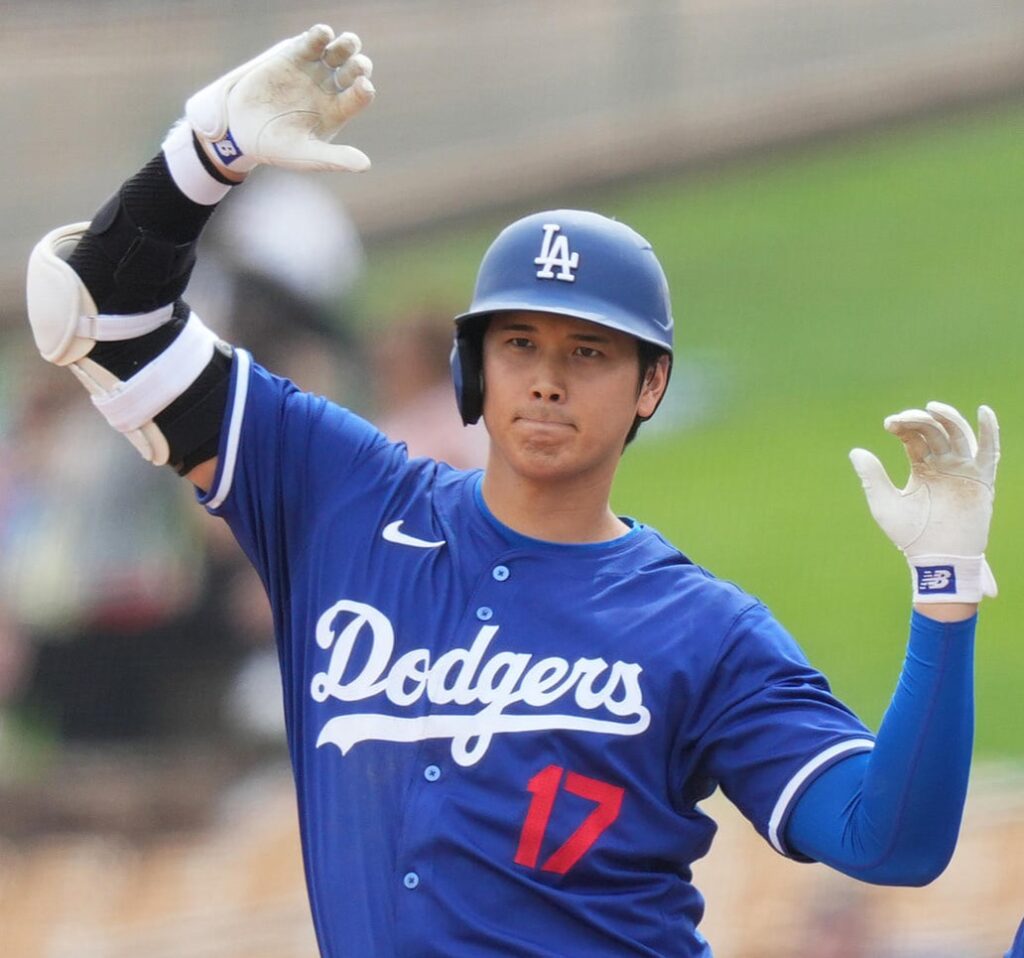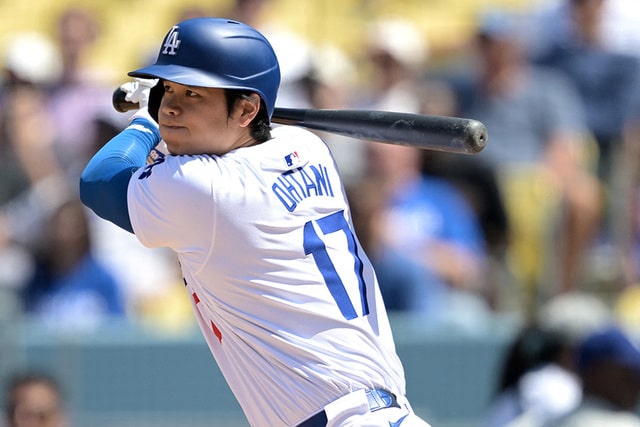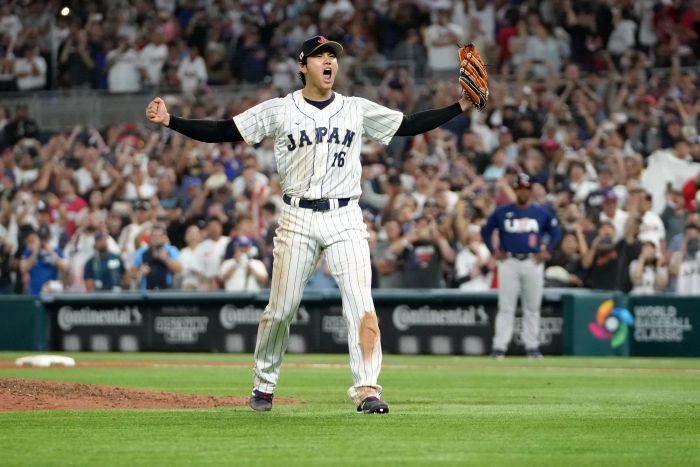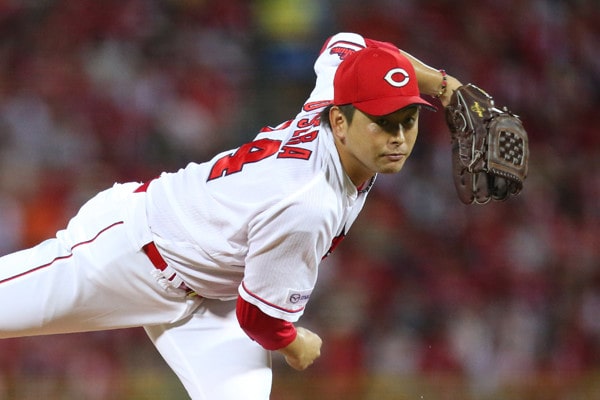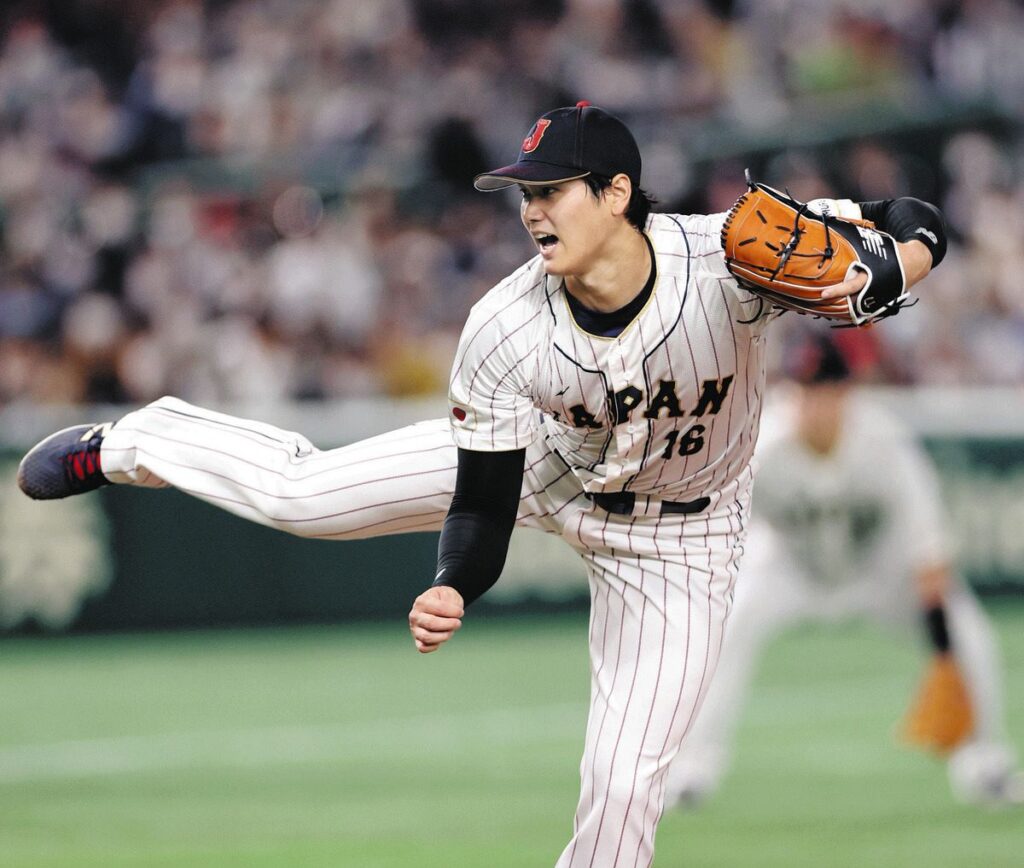
In baseball, a 170 km/h fastball is an incredibly fast speed.
When a pitcher throws a ball at a speed exceeding 170 km/h, its destructive power is immense and it poses an extremely tough challenge to the batter.
Pitchers who can throw fastballs like this not only have physical ability, but also mental strength and advanced technique.
In this article, we will delve into a wide range of topics, from basic information about the 170 km/h fastball to its history, how pitchers train, and a scientific analysis.
We will also take a closer look at the impact of this fastball and its future prospects.
First, let’s look at the definition of a 170 km/h fastball and some basic information about it.
目次
What is a 170 km/h fastball in baseball?
In baseball, a 170 km/h fastball is as fast as a pitcher at the highest level can throw.
This incredible speed makes it extremely difficult for batters to hit and also an exciting element for spectators.
Here we take a closer look at the definition of a 170 km/h fastball, its history and development, and its impact.
Definition of a 170 km fastball
A 170 km fastball is one that is thrown by a pitcher at a speed of 170 kilometers per hour.
This speed equates to approximately 47.2 meters per second, and the ball travels a distance of approximately 18.44 meters (60 feet, 6 inches) from the pitcher to the batter in approximately 0.39 seconds.
This speed gives the batter very little time to react, making it difficult to hit the ball back.
Typically, a pitcher who can throw a 170 km/h fastball has very strong arms and excellent pitching form, allowing him to efficiently transfer power from his entire body to the ball.
In addition, the fastball is measured with a speed gun or radar gun and kept as an official record.
History and Development of the 170 km/h Fastball
The 170 km/h fastball is a relatively new phenomenon in baseball history.
At the start of the 20th century, a fastball over 150 km/h was considered incredible, but with advances in technology and improved training methods, pitchers’ fastball speeds have increased over the years.
The first pitcher to break the 170 km/h barrier was Major League Baseball pitcher Aroldis Chapman.
In 2010, Chapman threw a fastball at 105.1 mph as a member of the Cincinnati Reds and has since increased his velocity to over 170 mph.
In Japan, there are several pitchers who can throw fastballs approaching 170 km/h.
For example, professional baseball player Shohei Ohtani recorded a fastball speed of over 165 km/h while playing for the Nippon Ham Fighters before joining the Major Leagues, attracting worldwide attention.
These records are the result of improved physical fitness among pitchers, evolved training techniques, and a scientific approach.
The impact of a 170 km/h fastball
A 170 km/h fastball has a variety of effects on the baseball.
Impact on hitters : For hitters, a 170kph fastball creates a very short reaction time and makes it extremely difficult to time their swing. Therefore, hitters need to work on improving their reflexes and swing speed to better handle a fastball.
Impact on pitchers : Pitchers who throw fastballs need to continue training to maintain their velocity. Fastballs also put a lot of strain on the shoulders and elbows, increasing the risk of injury. Pitchers must balance the speed of their fastball with maintaining their health.
Impact on team strategy : A pitcher with a 170 km fastball is a valuable asset to a team. Such a pitcher is required to pitch at key moments in the game and shut down the opposing batting line-up. Teams build their strategies around fastball pitchers and use them effectively.
Impact on fans and media : A 170 km/h fastball is a big topic of conversation for spectators and the media. Fans get excited by the ball thrown at such an overwhelming speed, and the media gets their attention by reporting on the fastball. The fastball is an important element that enhances the entertainment value of baseball.
A 170 km/h fastball is something special in baseball, and it has a huge impact on pitchers, batters, teams and fans alike.
There will likely be pitchers in the future who can throw even faster balls.
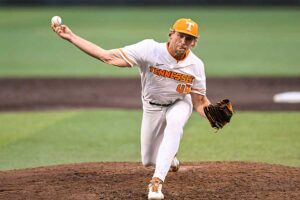
What it takes to throw a 170 km/h fastball
A pitcher must meet a variety of conditions to throw a fastball at 170 km/h.
The key is physical conditioning, mental conditioning and proper training methods.
Here we explain these conditions in more detail.
Physical Conditions
To throw a fastball at 170 km/h, you first need a strong physique.
Muscle strength : To throw a fastball, not only shoulder and arm strength but also whole body strength is important. In particular, lower body strength is the source of power for throwing. Strength training such as squats and deadlifts is effective.
Flexibility : In addition to strength, flexibility in the shoulders and elbows is also important. Flexible joints and muscles facilitate smooth throwing motion and reduce the risk of injury. Flexibility training such as stretching and yoga is recommended.
Endurance : To maintain high performance throughout a long season, you also need endurance. By incorporating aerobic exercise and interval training, you can improve your cardiovascular fitness.
Pitching form : Efficient pitching form is also essential to throwing a fastball. Poor form will result in less power transfer, lowering the velocity of the fastball and increasing the risk of injury. It is important to work with a pitching coach to establish proper form.
Mental Conditions
To throw a fastball at 170 km/h, you also need a strong mentality.
Concentration : High concentration is essential when pitching a fastball. You need to stay focused on your pitch even in pressure situations. Meditation and mindfulness practices can help improve your focus.
Confidence : Having confidence in your pitching is also important. Remembering past successes and positive feedback can help boost your confidence. Confidence also helps you stay calm under pressure.
Mental toughness : Mental toughness is required during long seasons and tough games. You need a strong mentality to face adversity and not let mistakes drag you down. Psychological counseling and mental training are effective.
Training Method
By adopting the right training methods, you can prepare yourself to throw a fastball at 170 km/h.
Weight training : Weight training is essential to build muscle strength. It is especially important to train the muscles of the shoulders, arms, chest, back, and legs in a balanced manner. Bench presses, shoulder presses, and deadlifts are effective.
Pitching drills : Pitching drills that involve repeating the actual pitching motion are also important. Drills are conducted to improve the details of your technique, such as how to grip the ball, the release point, and how to step.
Speed training : To increase the speed of your fastball, you also need to do speed training. Training with a medicine ball or a special pitching machine is effective.
Recovery : Recovering after training is also important. Icing, stretching, massage and getting enough sleep will help you recover and be ready for your next training session.
Combining these physical, mental and training methods will help you build the foundation for throwing a 170 km/h fastball.
It is important to keep up with the latest information and technology and implement a training plan that suits you.
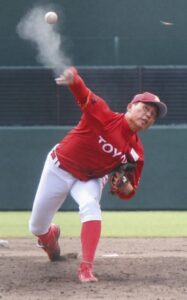
Pitchers who throw 170 km/h fastballs
Pitchers who can throw fastballs at 170 km/h captivate the audience with their overwhelming speed and put pressure on opponents.
Historically, there have been many fast pitchers in baseball, both in modern baseball and in Japanese professional baseball.
Here we take a closer look at the fastest pitchers of all time, the fastest pitchers in Major League Baseball, and the fastest pitchers in Japanese professional baseball.
Fastest pitcher of all time
Historically, the fastest pitchers have always shocked the baseball world.
For example, pitchers like Bob Feller and Nolan Ryan were known as the fastest pitchers of their era.
Nolan Ryan is known for his 100.9 mph fastball, recorded in 1974, but using modern measurement methods, his fastball could have exceeded 170 kph.
In recent years, Aroldis Chapman is widely regarded as the fastest pitcher ever.
As a member of the Cincinnati Reds in 2010, Chapman recorded a fastball speed of 105.1 mph (about 169.1 kph) and has continued to throw fastballs over 170 kph since then.
His fastball is also on the official major league record.
Fastest pitcher in major league baseball
There are many fastball pitchers in the major leagues.
Among them, Jordan Hicks is attracting attention as the fastest pitcher after Chapman. Hicks is active with the St. Louis Cardinals and recorded a speed of 105 miles per hour (about 169 kilometers) in 2018.
His fastball is recognized in the major leagues as second fastest behind Chapman.
Additionally, pitchers such as Jacob deGrom and Gerrit Cole are known to throw fastballs over 100 mph.
As the ace of the New York Mets, deGrom boasts a high strikeout rate along with a stable fastball.
Their fastballs have the power to change the course of a game and help their team win.
Fastest pitcher in Japanese professional baseball
Even in Japanese professional baseball, there are pitchers who can throw fastballs approaching 170 km/h.
For example, Shohei Ohtani recorded a fastball speed of over 165 km/h while playing for the Nippon Ham Fighters, and has continued to play in the Major Leagues.
Ohtani’s fastball is widely considered part of his versatile playing style.
Also attracting attention is Roki Sasaki, who has been highly regarded as a pitcher for the Lotte Marines since his professional debut.
In 2021, he recorded a fastball speed of 163 km/h and is expected to throw a fastball over 170 km/h in the future.
Shintaro Fujinami is one of them. As the ace pitcher for the Hanshin Tigers, his fastball is one of the fastest in Japanese professional baseball.
Since turning pro, Fujinami has used his powerful fastball to strike out many batters.
These pitchers have recorded the fastest pitches in their respective leagues, amazed and inspiring baseball fans.
A 170 km/h fastball is the result of a high level of fusion of a pitcher’s technique and physical ability, and it is expected that many more fastball pitchers will emerge in the future.

Strategy for hitting a 170 km fastball
Hitting a 170 km fastball is an extremely tough challenge for a batter.
Extremely short reaction times require precise technique and sharp focus.
Here, we will explain in detail the basic tactics, how to improve batting technique, and how to strengthen the mental aspect of a batter in order to hit a 170 km/h fastball.
Basic tactics for batters
To counter a 170 km/h fastball, it is important for batters to understand and practice basic tactics.
Prepare for a fastball : You need to anticipate a fastball and start swinging the bat early. By carefully observing the pitcher’s release point and getting your timing right, you can prepare to counter a fastball.
Adjusting your position and posture at the plate : Adjusting your position and posture at the plate can also be effective. For fastballs, standing further back in the batter’s box will give you more time to see the ball. Also, widening your stance will help you maintain balance and improve your ability to respond to fastballs.
Bat selection : It is also important to choose the appropriate weight and length of the bat. By choosing a lighter bat, you can increase your bat speed and make it easier to handle fastballs.
Improve your hitting technique
To hit a 170 km/h fastball, you need advanced hitting technique.
Improving your swing speed : There are specific exercises that can help improve your swing speed, such as tee-ball practice or using a swing trainer to increase the speed and power of your swing.
Reflex training : To improve your reflexes, you need to practice reducing your reaction time. Practice with a pitching machine and do fastball specific training drills to keep your reflexes sharp.
Ball identification : For fastballs, you need the ability to accurately identify the ball’s trajectory. Through eye training, you will develop the ability to follow the ball’s movement from the pitcher’s release point and predict the ball’s movement in the strike zone.
Mental Strengthening
Mental strength is also essential to face a 170 km/h fastball.
Staying focused : To stay focused, it’s important to find ways to relax before and during a match. Deep breathing, meditation and having a routine can help you achieve mental stability and improve your focus.
Positive thinking : Don’t be afraid of failure. Always think positively. Believing in your abilities and having confidence that you can handle the fastball will improve your performance at the plate.
Pressure management : It is necessary to remain calm even under pressure. By doing mental training before the game and learning how to deal with pressure, you can reduce anxiety about fastballs.
To compete against a 170 km/h fastball, a batter needs to understand basic tactics, master advanced hitting techniques, and maintain a strong mentality.
Combining these factors can increase your chances of hitting the fastball back.

The impact of a 170 km/h fastball
His 170 km/h fastball has had a huge impact on the baseball world with its overwhelming speed.
The impact will be far-reaching, from pitchers to teams to fans to the media.
Here we will take a closer look at the burden and risks on pitchers, the impact on team strategies, and the impact on fans and the media.
Burden and risk on pitchers
Throwing a 170 km/h fastball puts a huge strain on a pitcher.
Physical strain : Throwing a fastball puts a lot of strain on the shoulder and elbow. This puts stress on the tendons, ligaments and joints, increasing the risk of injury. In particular, the force of pitching is transmitted to the joints suddenly, leading to an increase in cases of shoulder labrum tears and the need for Tommy John surgery (reconstruction of the medial collateral ligament in the elbow).
Fatigue Management : Proper fatigue management is necessary to sustain high pitching velocity. Pitchers should avoid consecutive pitches and get plenty of rest. It is also important to manage fatigue and reduce the risk of injury by limiting the number of pitches and undergoing proper rehabilitation and training.
Impact on team strategy
A pitcher with a 170 km/h fastball can have a huge impact on a team’s strategy.
How to use them : These fastball pitchers are often used in important situations in games or against the opposing team’s powerful hitters. They have the power to change the flow of the game by shutting down the opposing batters with the overwhelming power of their fastballs.
Bullpen Staffing : Teams use fastball pitchers as relief pitchers to help them get out of tight spots late in games, and often as closers to help protect leads.
Development and Scouting : The team will focus on scouting and developing young players to develop future fastball pitchers. By incorporating training methods for throwing fastballs and methods to prevent injuries, the team will develop the next generation of star pitchers.
Impact on fans and media
His 170 km/h fastball has a big impact on fans and the media.
Entertainment : Fastballs are a very exciting element for spectators. Whether watching at the stadium or on television, the speed of the fastball elicits cheers and increases the tension of the game. This entertainment value adds to the appeal of baseball.
Media attention : A 170 km/h fastball is big news for the media. A fastball pitcher’s success and record-breaking performance are featured in sports news and feature articles, drawing attention from fans. This increases the player’s publicity and helps promote the team.
Marketing and business : Fast bowlers are more likely to land sponsorship and advertising deals due to their impressive performance. Companies use the image of fast bowlers to promote their products and brands, thus increasing their marketing impact.
A 170 km/h fastball is an important factor in a pitcher’s own health management, team strategy, and attracting the attention of fans and the media.
Its influence is spreading throughout the baseball world, further enhancing its appeal as a sport.

The scientific analysis of a 170 km/h fastball
His 170 km/h fastball is one of the most dominant plays in baseball.
By accurately measuring the ball’s speed, understanding the physical characteristics of the ball, and analyzing the pitching form and mechanics, we can gain a deeper understanding of the true essence of a fastball.
Here we take a detailed look at the scientific analysis of a 170 km/h fastball.
How to measure speed
Advanced technology is required to accurately measure a 170 km/h fastball.
Here are the main ways to measure it:
Radar guns : Radar guns are the most common way to measure pitching velocity. They measure the velocity of the ball from the moment it is released until it reaches the catcher’s mitt. This data is very reliable because it shows the velocity closest to the pitcher’s release point.
Trackman System : Trackman is a system that uses radar technology to measure the ball’s trajectory and spin rate. This allows you to analyze not only the speed of the ball, but also the rotation and trajectory of the ball. Trackman is widely used at professional level.
High-speed cameras : Using high-speed cameras, we can capture detailed footage of the ball from release to catch, and calculate the speed for each frame. This method is very useful for analysing the ball’s trajectory and minute movements at the release point.
Ball physics
To understand a 170 km/h fastball, the physics of the ball are also important.
Air resistance : When a fastball is thrown, the ball experiences air resistance. Air resistance reduces the ball’s speed, so it is important to minimize it. The surface condition and rotation speed of the fastball greatly affect air resistance.
Spin and Gyroscopic Effect : The spin rate of the ball greatly affects its stability and trajectory during flight. A high spin rate creates the effect of the ball appearing to rise, making it harder for the batter to time the ball. This effect, also known as the gyroscopic effect, increases the power of a fastball.
Ball Material : The material of the ball also affects its speed. Major League Baseball and Nippon Professional Baseball use slightly different materials, which can affect the flight characteristics of the ball. For example, the height and stiffness of the seams on the ball affect the pitcher’s grip and release of the ball.
Pitching form and mechanics
To throw a 170 km/h fastball, you need to have the correct pitching form and understand mechanics.
Power transmission : When pitching, it is important to transmit power from the lower body to the upper body. It starts with stepping on the ball, and the power is transmitted to the arm through the torso. By performing this series of movements efficiently, you can generate maximum speed.
Release Point : Fastball velocity is also affected by the release point. A good release point will apply optimal force to the ball and maximize velocity. A consistent release point will also improve control.
Shoulder and Elbow Action : Accurate shoulder and elbow action is also important. These joints are subjected to the greatest forces when throwing a fastball, so they need to move at the proper angles and timing. Proper training and form modification are essential to reducing the risk of injury and maintaining fastball velocity.
The true nature of a 170 km/h fastball can be revealed through scientific analysis.
By better understanding how velocity is measured, the physics of the ball, and pitching form and mechanics, it is possible to maximize the devastating power of a fastball.

Future outlook for the 170 km fastball
His 170 km/h fastball is one of the most attention-grabbing pitches in baseball.
That future involves the implementation of new training techniques, the development of young pitchers and the evolution of baseball as a whole.
We will now explore these aspects in more detail.
Introducing new training techniques
In order to develop pitchers capable of throwing a fastball at 170 km/h, it is essential to introduce the latest training technology.
Utilizing Biomechanics : Biomechanics is a technique for the scientific analysis of pitching motion. Using high-speed cameras and motion capture systems, pitchers’ motions are analyzed in detail to ensure efficient form and power transfer. This allows pitchers to master the optimal pitching form and maximize the velocity of their fastballs.
Evolution of weight training : In addition to traditional weight training, the latest training equipment and programs have been developed. For example, in addition to barbells and dumbbells, training using kettlebells, medicine balls, TRX, etc. has become widespread. This allows pitchers to train the muscles of their entire body in a balanced manner.
Introduction of Sports Science : Sports science provides a scientific approach to improve pitcher performance. Disciplines such as nutrition, psychology and physiology are integrated to create a comprehensive training program. This strengthens pitchers mentally as well as physically, improving the endurance and consistency of their fastball.
Developing young pitchers
Developing young pitchers who can throw fastballs at 170 km/h is an important issue that will support the future of baseball.
Early Identification and Development Programs : Programs are in place to identify and develop talented young pitchers early on. This includes scouting efforts at the amateur level, such as Little League and high school baseball. Identified talent is developed in specialized training facilities and receives professional instruction.
Technical instruction and mental training : For young pitchers, not only technical instruction but also mental training is important. Throwing a fastball requires advanced technique and strong mentality. The coaching staff provides individual instruction to young pitchers to develop their technique and confidence.
International exchange and experience : It is also important for young pitchers to gain experience on the international stage. By participating in international tournaments and leagues, they can be exposed to different styles of baseball and learn a variety of tactics. This allows pitchers to gain a wide range of experience and has the opportunity to grow.
The evolution of baseball and the future of the fastball
Baseball is constantly evolving, and the future of the fastball is part of that.
Technological advances : Baseball techniques are evolving every day, and fastball throwing techniques continue to improve. Advances in science and technology lead to the development of new pitching techniques and training methods, improving pitcher performance.
Rule Changes : Changes to baseball’s rules could change the role and importance of the fastball, such as pitch limits or the introduction of a pitch clock. This could force pitchers to be more efficient and change the frequency and tactics of using the fastball.
Fan Expectations : The fastball is an exciting spectator element and will continue to be so in the future. To meet fan expectations, pitchers will strive to throw the fastball faster and with more power.
The future of the 170 km/h fastball depends heavily on the evolution of technology, the development of young pitchers and the evolution of baseball as a whole.
With the introduction of new training techniques and the development of young pitchers, more pitchers will be able to throw incredible fastballs.
